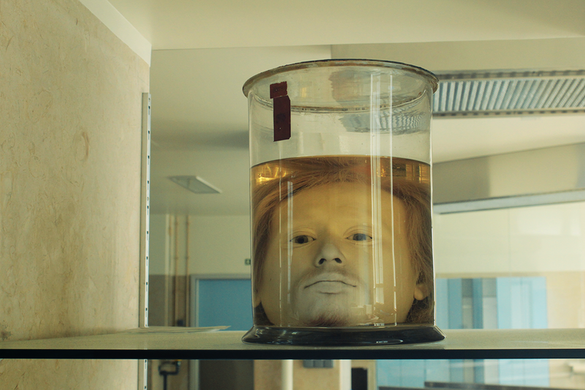Diogo Alves (1810 – February 19, 1841) was a Spanish-born Portuguese serial killer and robber. Between 1836 and 1840, he killed seventy people. The crimes he committed were all in the area of the Águas Livres Aqueduct, thus earning the title “Aqueduct Murderer”. He was sentenced to death and hanged on February 19, 1841. His head was separated from his body and placed in a flask to preserve it for scientific purposes, and it is now a tourist attraction

Born in Galicia to a peasant family, Alves fell from the family horse while at a young age and hit his head, earning the nickname “Pancada” (“blow”). At the age of nineteen, his parents sent him to work in Lisbon. After changing jobs several times and ceasing to write to his parents, he began to drink and gamble, meeting up with innkeeper Maria “Parreirinha” Gertrudes. It is believed that this connection instigated Alves to kill. He began to commit crimes, earning a second nickname “The Aqueduct Murderer”. He robbed poor passers-by, and then dumped them from a height of 60 meters to simultaneously avoid identification and present the deaths as suicides, a ploy which initially succeeded.
The murders on the aqueduct remained unproven, but a jury sentenced Alves and his gang for other crimes, in particular, murdering the four family members of a doctor. Maria’s 11-year-old daughter, Maria de Conceição, testified in court against the gang. Her mother was eventually sent to a lifelong exile in African colonies.
Alves became the penultimate (often mistakenly claimed to be the last) criminal to be hanged in Portugal. His actions at the time intrigued scientists from the then Medical-Surgical School of Lisbon. After his hanging, in an attempt to study his brain, Alves’ head was cut off and studied. It is still preserved in a glass vessel, in a solution of formaldehyde. Scientists could never explain what led him to buy a false key for the Aqueducts, where he was hiding, and how many people he had robbed and killed. The severed head is currently in the anatomical theater of the University of Lisbon’s Faculty of Medicine, following the formation of a phrenology cabinet made by José Lourenço da Luz Gomes, which allowed the preservation of Alves’ skull, along with that of Matos Lobo (one of the last people to be executed in Portugal) in the old medical-surgical school. The head of Diogo Alves was one of the most significant objects of the passage in One hundred pieces for the Museum of Medicine, which took place in the National Museum of Ancient Art in 2005.


